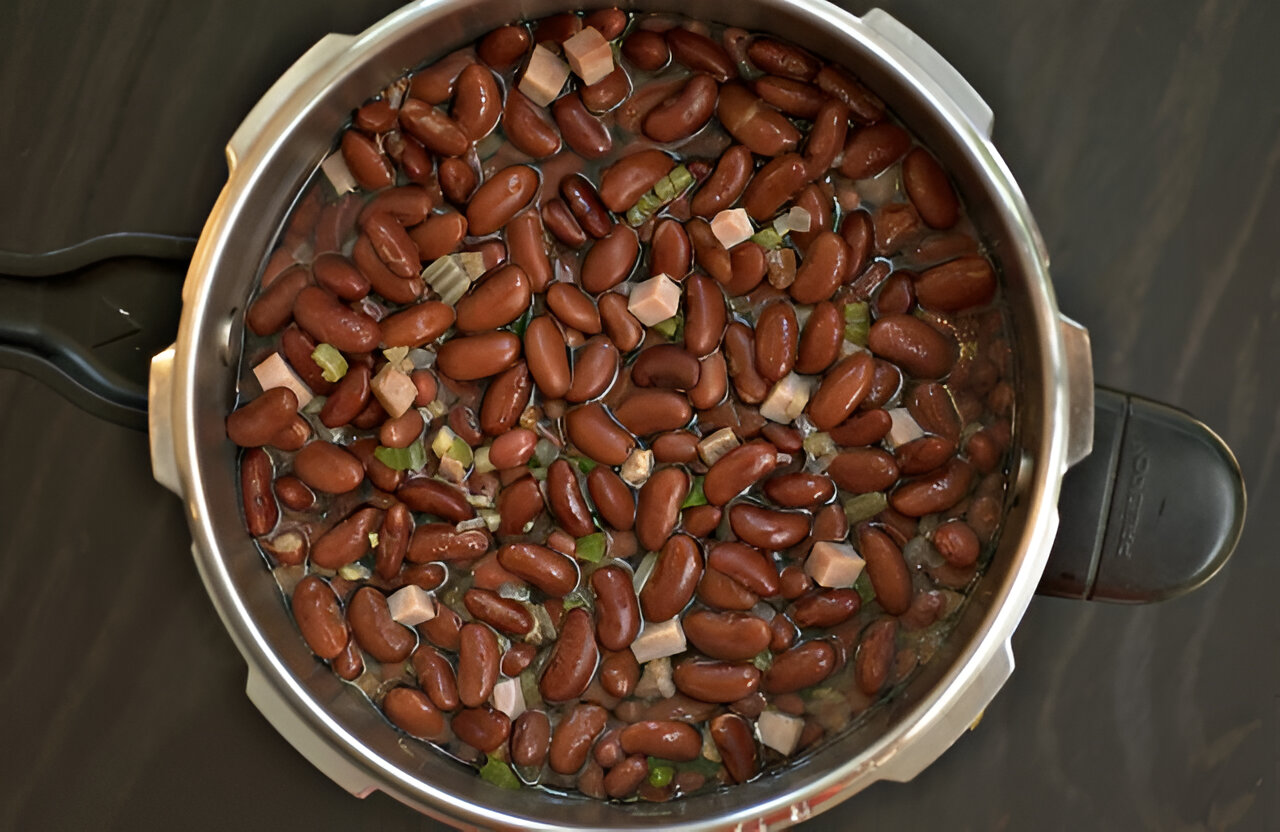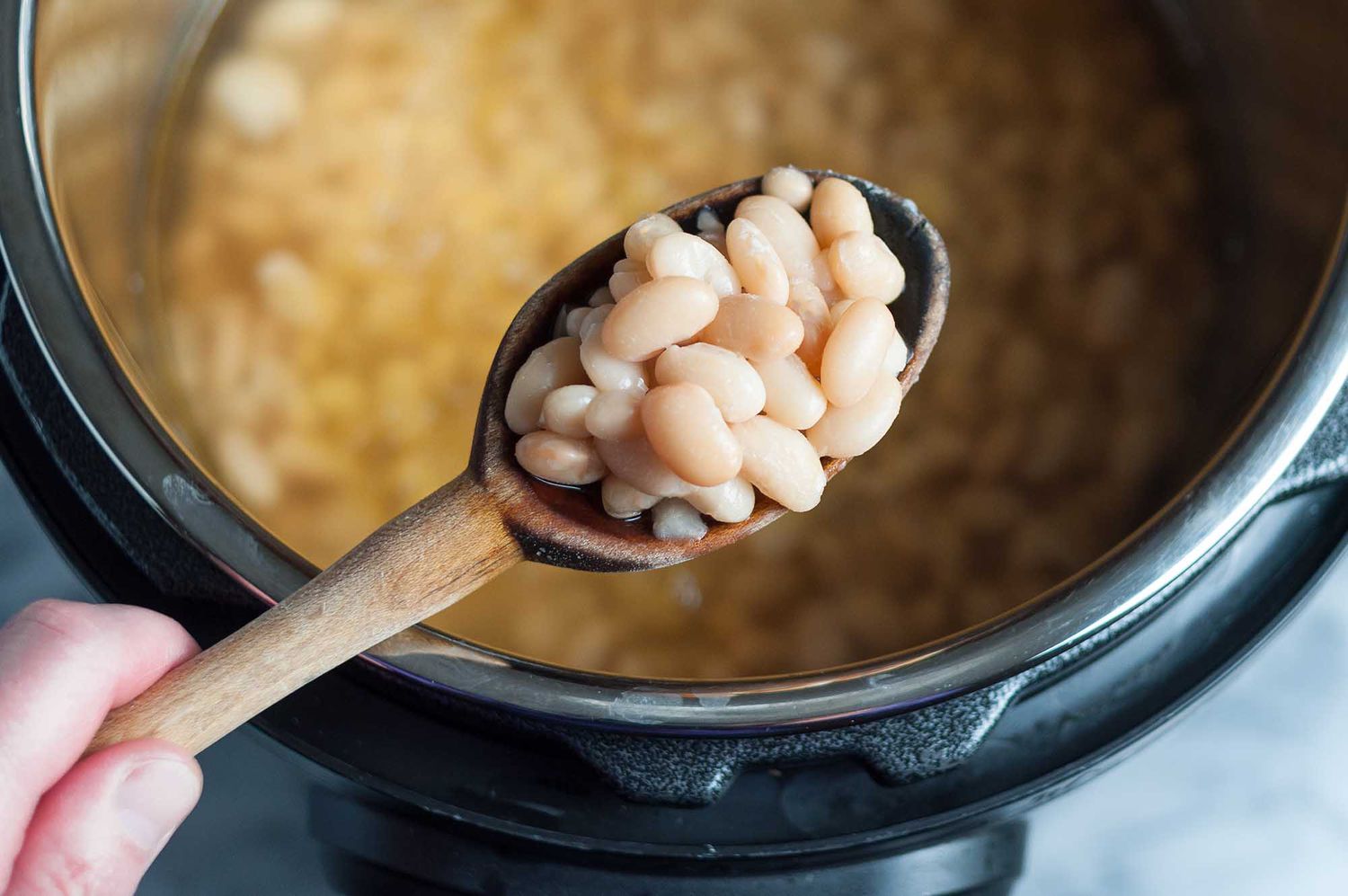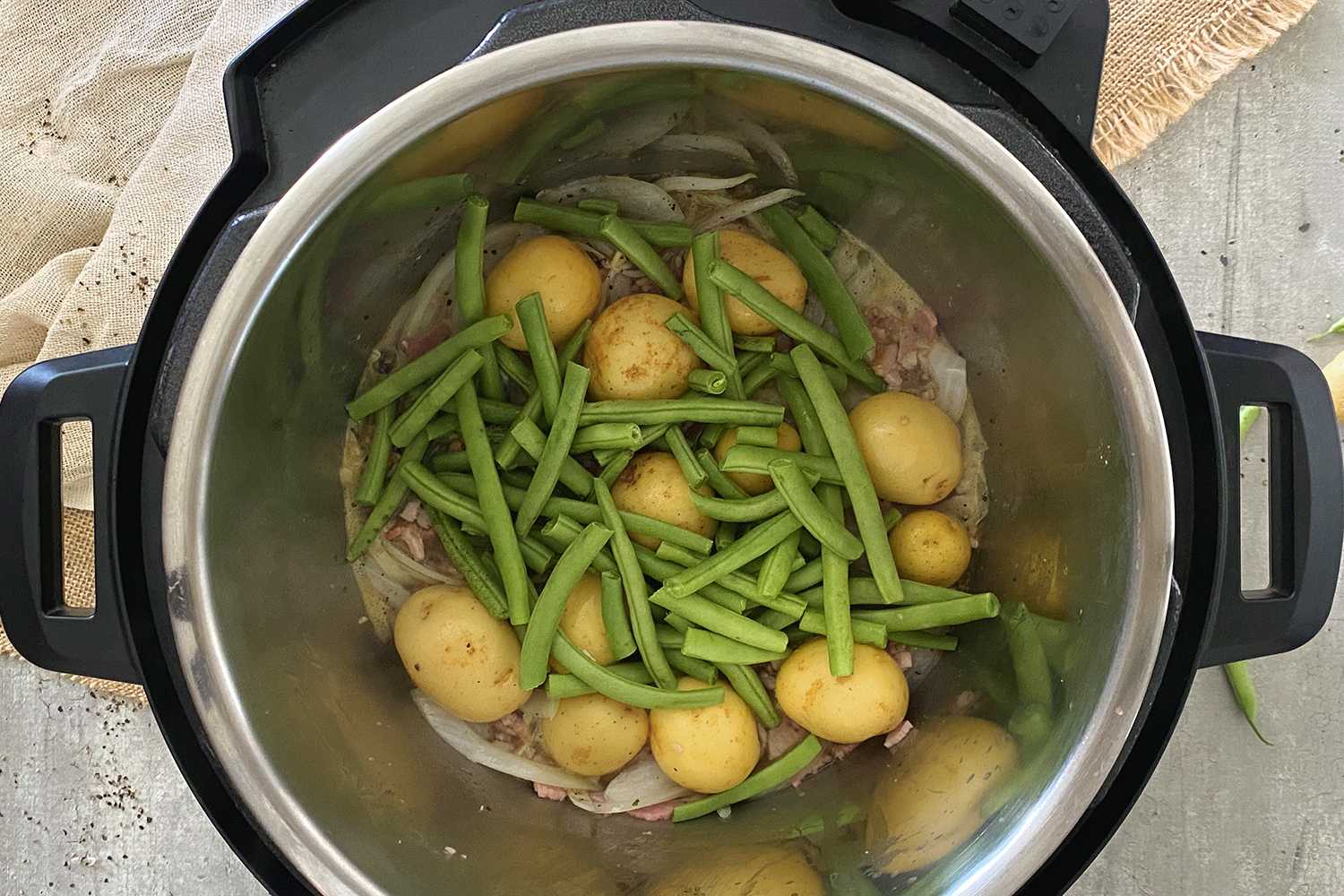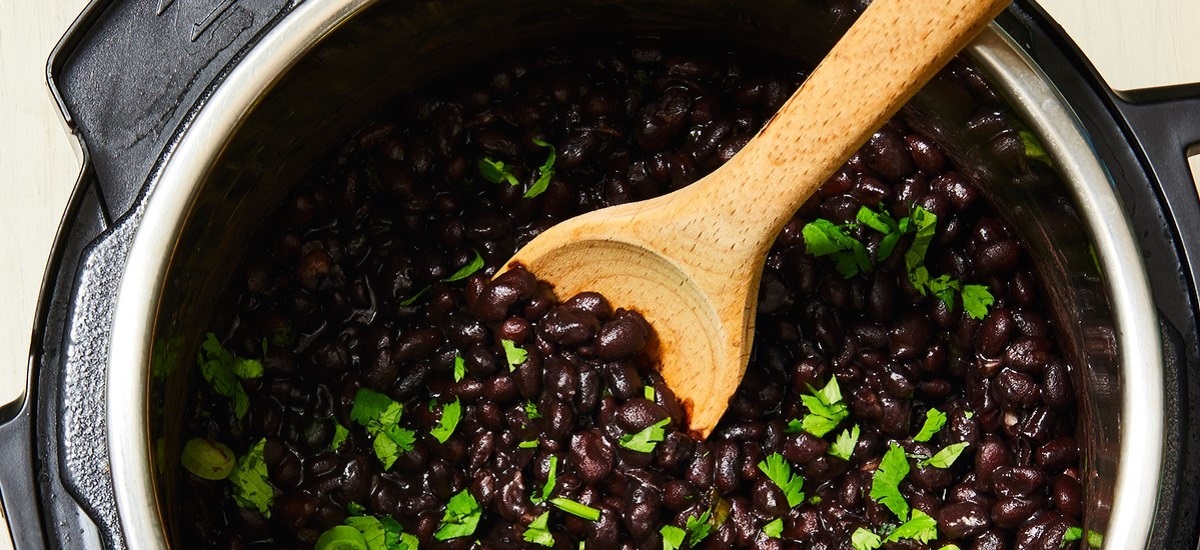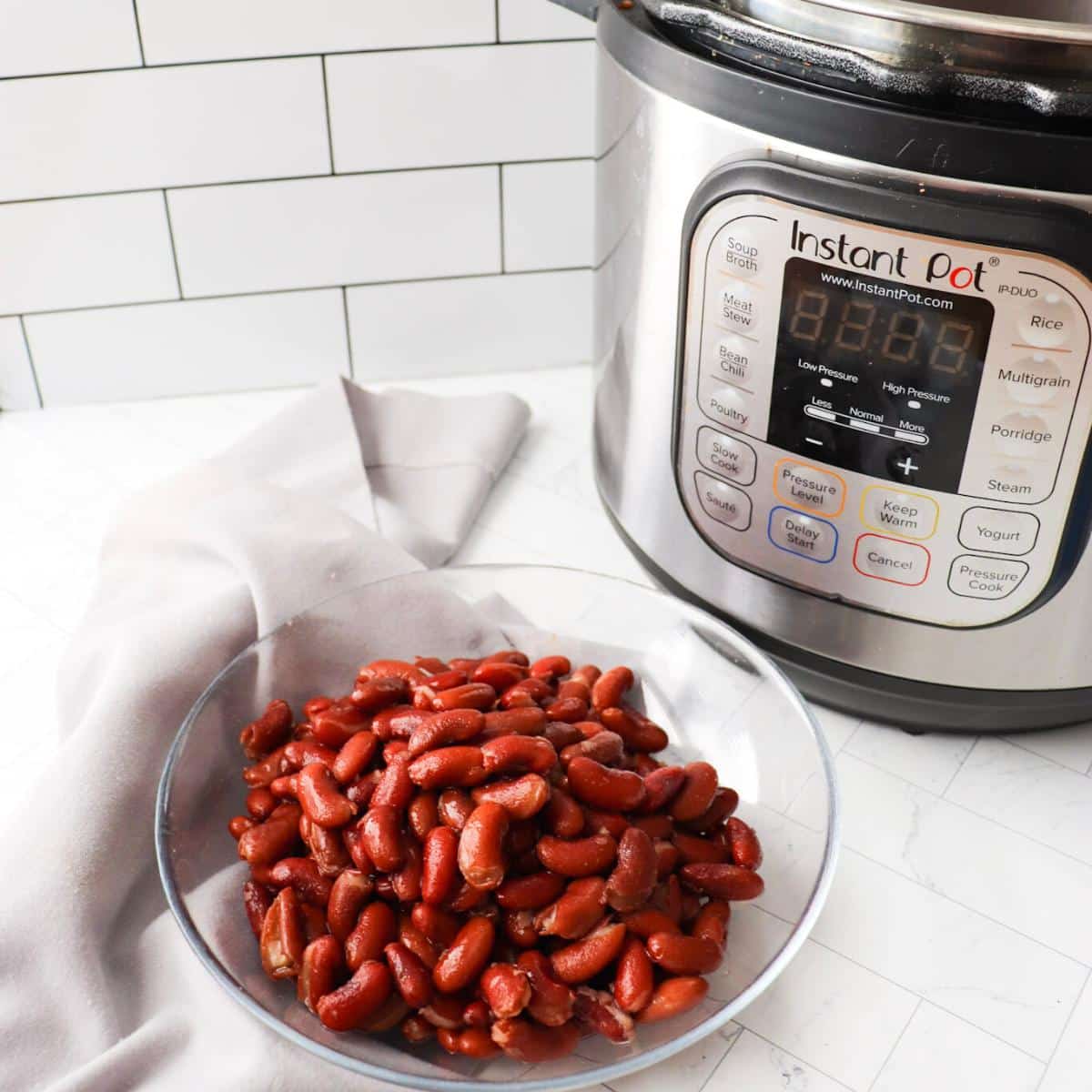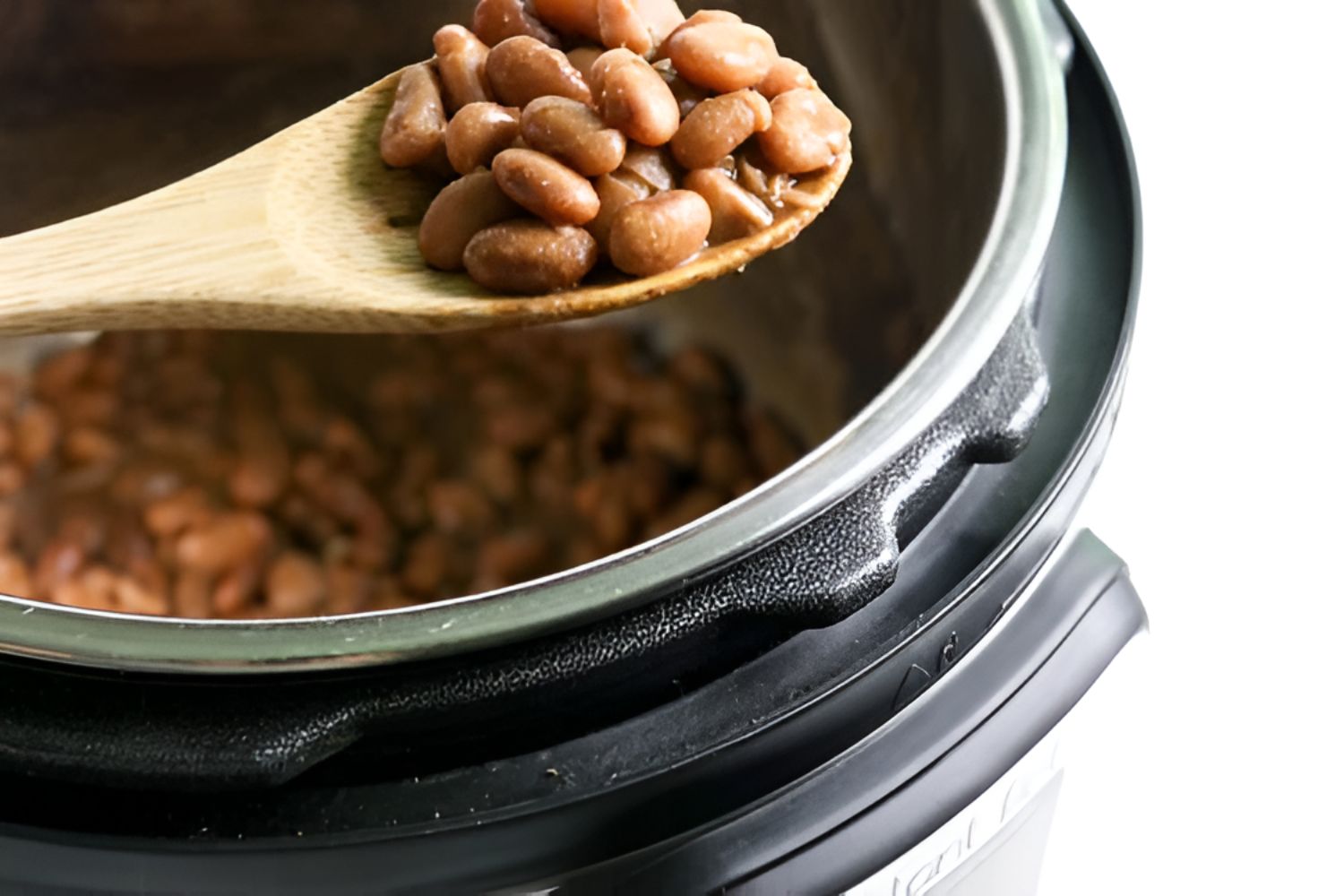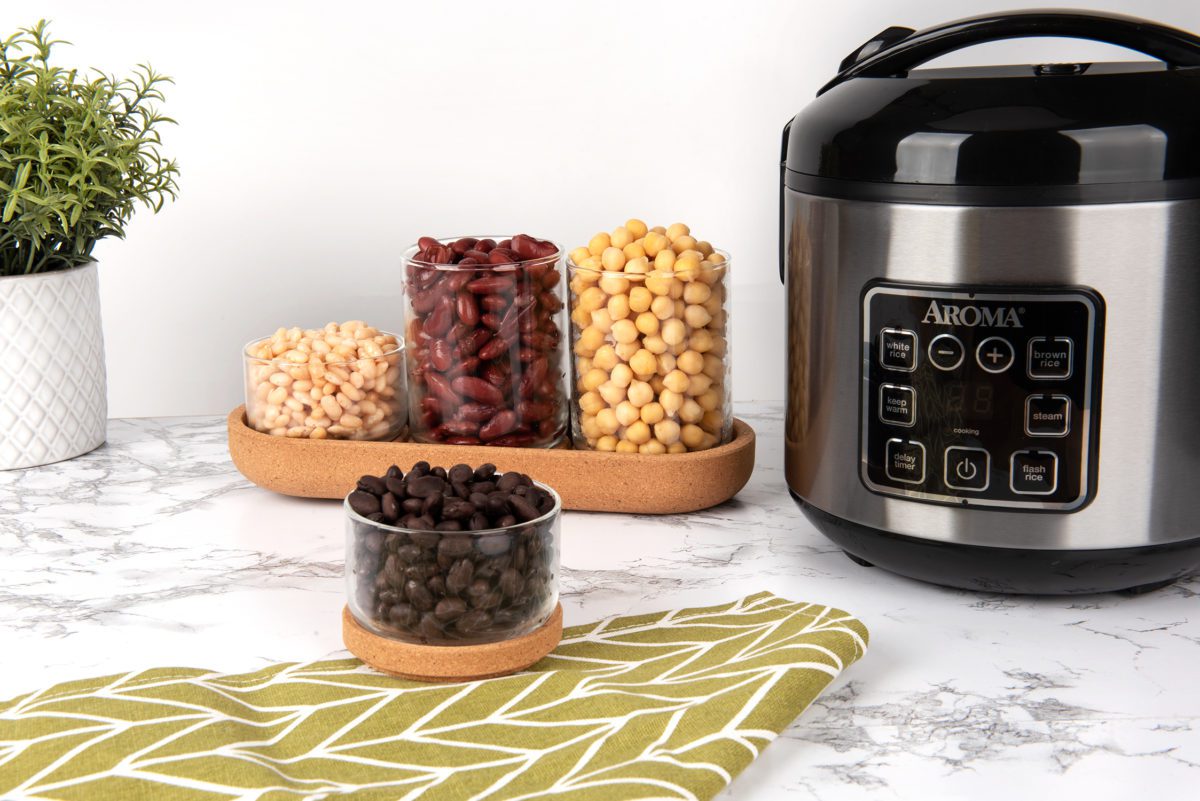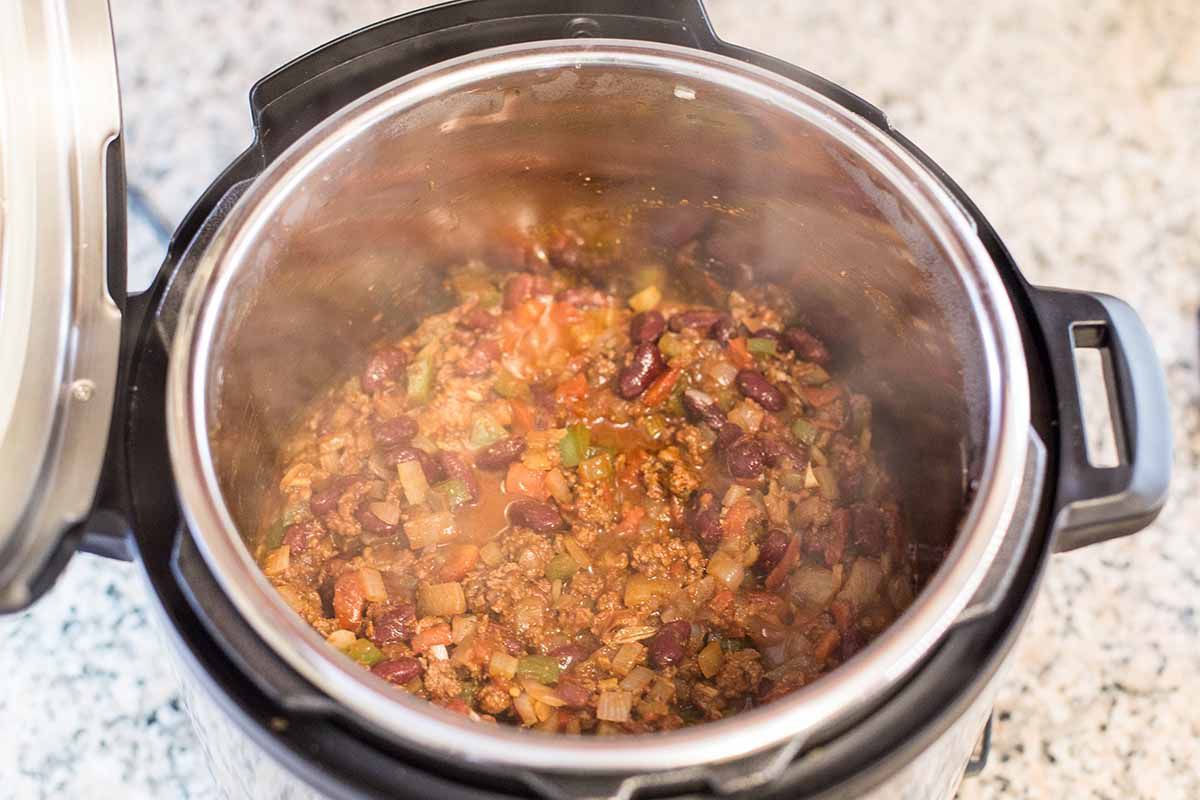Introduction
Welcome to the flavorful world of cooking beans in an electric pressure cooker! Whether you’re a seasoned chef or a cooking enthusiast, using an electric pressure cooker to cook beans can revolutionize the way you prepare this versatile and nutritious ingredient. With its convenient and efficient cooking process, an electric pressure cooker can produce perfectly cooked beans in a fraction of the time it takes using traditional methods.
In this article, we will explore the benefits of using an electric pressure cooker to cook beans, different soaking methods, step-by-step instructions for cooking beans in an electric pressure cooker, and tips to enhance their flavor. We will also provide troubleshooting tips for common bean cooking issues and highlight safety precautions when using an electric pressure cooker.
Gone are the days of waiting hours for beans to simmer on the stovetop or using overnight soaking methods. The electric pressure cooker takes the guesswork out of bean cooking and delivers consistently tender and flavorful results. With its sealed environment and intense heat, an electric pressure cooker can infuse beans with delicious flavors while also preserving their nutritional value.
Not only does using an electric pressure cooker save time, but it also preserves the integrity of the beans. Traditional cooking methods often result in overcooked or mushy beans, but the controlled pressure and cooking time of an electric pressure cooker ensure that your beans are perfectly cooked every time.
Whether you’re cooking black beans, kidney beans, chickpeas, or any other variety of beans, an electric pressure cooker can handle it all. You can create a wide range of dishes, from hearty soups and stews to flavorful bean salads and side dishes.
Join us as we dive into the art of cooking beans in an electric pressure cooker and discover the endless possibilities that this kitchen appliance offers. Get ready to enjoy perfectly cooked beans that are full of flavor, nutrients, and, most importantly, convenience.
Benefits of Using an Electric Pressure Cooker to Cook Beans
Using an electric pressure cooker to cook beans offers a multitude of benefits that make it a game-changer in the kitchen. Let’s explore some of the advantages:
1. Time-Saving: The most significant advantage of using an electric pressure cooker is the significant reduction in cooking time. Cooking beans on a traditional stovetop can take hours, but with an electric pressure cooker, you can enjoy perfectly cooked beans in a fraction of the time. The pressurized cooking environment speeds up the cooking process, making it a convenient option for busy individuals.
2. Energy-Efficient: Electric pressure cookers are designed to be energy-efficient, meaning they use less energy compared to traditional stovetop cooking methods. They trap and utilize steam to cook the beans, reducing the amount of time and energy required to achieve desired results.
3. Retains Nutritional Value: The sealed cooking environment of an electric pressure cooker helps to retain the nutritional value of beans. Unlike boiling or soaking methods, which can lead to nutrient loss, pressure cooking preserves the nutrients, vitamins, and minerals present in the beans, ensuring a healthier meal.
4. Improved Digestibility: Beans, while highly nutritious, can sometimes be challenging to digest. Pressure cooking breaks down complex carbohydrates and plant proteins, making them more easily digestible. This can minimize digestive discomfort often associated with consuming beans.
5. Enhanced Flavor: Cooking beans in an electric pressure cooker allows flavors to permeate the beans, resulting in more flavorful dishes. The intense heat and pressure help to infuse ingredients and spices into the beans, providing a depth of flavor that is difficult to achieve through other cooking methods.
6. Versatile Cooking: Electric pressure cookers offer a wide range of cooking options, allowing you to prepare various bean dishes. From soups and stews to dips and spreads, the electric pressure cooker can handle it all. It gives you the flexibility to experiment with different recipes and explore the culinary world of beans.
7. Easy to Use: Electric pressure cookers are known for their user-friendly design and convenience. They typically come with pre-programmed settings for different types of beans, taking the guesswork out of cooking times and temperatures. With just a few simple steps, you can have perfectly cooked beans on your plate.
8. Safety Features: Electric pressure cookers are equipped with safety features that make them reliable and secure to use. These features include a locking lid, pressure release valve, and automatic shut-off. These mechanisms ensure that the pressure inside the cooker is safely regulated, providing peace of mind while cooking beans.
With these benefits in mind, it’s clear that using an electric pressure cooker to cook beans not only saves time but also produces delicious and nutritious results. Get ready to revolutionize your bean cooking experience and explore a world of flavors with the convenience of an electric pressure cooker.
Preparing Beans for Pressure Cooking
Before diving into the process of pressure cooking beans, it’s essential to properly prepare them. This preparation step contributes to achieving optimal texture, flavor, and overall cooking success. Here are some key steps to follow when preparing beans for pressure cooking:
1. Sorting and Rinsing: Start by sorting through the beans to remove any debris, stones, or damaged beans. After sorting, thoroughly rinse the beans under cold running water to eliminate any dirt or impurities. This step helps ensure you have clean and high-quality beans for cooking.
2. Soaking Beans: Soaking the beans before pressure cooking can help reduce cooking time and improve their digestibility. There are two common methods for soaking beans: the overnight soak and the quick soak method.
– Overnight Soak: Place the rinsed beans in a large bowl and cover them with enough water to submerge them completely. Let the beans soak overnight or for at least 8 hours. This slow soak method allows the beans to absorb water gradually, resulting in more even cooking.
– Quick Soak: If you don’t have time for an overnight soak, you can opt for the quick soak method. Place the rinsed beans in a pot and cover them with water. Bring the water to a boil and let it boil for 2 minutes. Remove the pot from the heat, cover it, and let the beans soak for 1 hour.
Note: Some beans, like lentils or split peas, do not require soaking and can be cooked directly in the pressure cooker. However, soaking is still beneficial for enhancing flavor and reducing cooking time.
3. Discarding Soaking Water: After soaking the beans, drain and discard the soaking water. This step helps to remove some of the natural sugars that can cause gas and digestive discomfort.
4. Rinse Again: Give the soaked beans a final rinse under cold running water to remove any residue. This step ensures clean beans and removes any remaining impurities.
Once you’ve gone through these preparation steps, your beans are now ready for pressure cooking. The soaking process helps to soften the beans and break down complex carbohydrates, resulting in a more even and efficient cooking process. So grab your electric pressure cooker and get ready to cook up some delicious and nutritious beans!
Soaking Methods for Beans
Soaking beans before cooking can help reduce their cooking time and enhance their texture. Here are three common soaking methods for beans:
1. Overnight Soak: The overnight soak method is the most traditional and time-consuming method, but it yields the best results. To do this, start by rinsing the beans to remove any dirt or impurities. Then, place the beans in a large bowl and cover them with enough water to fully submerge them. Let the beans soak overnight, or for at least 8 hours. This slow, gradual soaking allows the beans to absorb water evenly and results in a more even cooking process. Rinse the beans before proceeding with the cooking step.
2. Quick Soak: If you’re short on time and still want to reap the benefits of soaking, the quick soak method is a great alternative. First, rinse the beans thoroughly. Then, place them in a pot and cover them with water. Bring the water to a boil and let the beans simmer for 2 minutes. After that, remove the pot from the heat, cover it, and let the beans soak for 1 hour. This method provides a similar effect to the overnight soak but in a shorter time frame. Rinse the beans before moving on to cooking.
3. Hot Soak: The hot soak method is a variation of the quick soak method and can be used when you’re really pressed for time. Start by rinsing the beans thoroughly, then place them in a pot and add water. Heat the pot on the stovetop until the water reaches a boil. Let the beans boil for 2-3 minutes, then remove the pot from the heat, cover it, and let the beans soak for about 1-2 hours. Rinse the beans before cooking.
Important Note: While soaking beans is a common practice, it’s worth noting that some beans, such as lentils and split peas, do not necessarily require soaking. These beans have a softer texture and usually cook relatively quickly without soaking. However, soaking can still help enhance their flavor and reduce cooking time.
Soaking beans not only reduces their cooking time, but it also helps to eliminate some of the complex sugars that may cause digestive discomfort. By softening the beans before cooking, you’ll achieve a more even texture and ensure they cook to perfection in the pressure cooker. So, choose the soaking method that works best for your schedule and get ready to enjoy perfectly cooked beans!
Cooking Beans without Soaking
If you find yourself in a situation where you want to cook beans but haven’t had the chance to soak them, don’t worry! While soaking can help reduce cooking time and improve texture, it is possible to cook beans without soaking them beforehand. Here’s how:
1. Rinse the Beans: Start by rinsing the beans thoroughly under cold running water. This step removes any dirt or debris that may be present.
2. Adjust the Cooking Time: Since the beans haven’t been soaked, they will require a longer cooking time. In an electric pressure cooker, increase the cooking time by about 5-10 minutes for every 1 cup of beans. The exact cooking time may vary depending on the type and size of the beans, so it’s a good idea to consult the manual for specific cooking guidelines.
3. Add More Liquid: Without soaking, the beans will absorb more liquid during the cooking process. Make sure to add enough liquid to the pressure cooker to cover the beans adequately. This will ensure that the beans cook evenly and are not dried out.
4. Season and Flavor: While the beans are cooking, you can add seasonings and flavors to enhance their taste. This can include ingredients like onions, garlic, herbs, or spices. The pressure cooker will infuse the flavors into the beans, resulting in a deliciously seasoned dish.
5. Natural Pressure Release: Once the beans have finished cooking, allow the pressure to release naturally. This will allow the beans to continue cooking in the residual heat and help further tenderize them.
6. Test for Doneness: After the pressure has released, carefully open the pressure cooker and test the beans for doneness. They should be tender and cooked throughout. If they are still slightly undercooked, you can continue cooking them on a low heat setting until they reach the desired texture.
Cooking beans without soaking will result in a longer cooking time and slightly different texture compared to soaked beans. However, it is still an effective method, especially when you’re short on time. Remember to adjust the cooking time, add enough liquid, and season the beans to your liking. With these steps, you’ll be able to enjoy a delicious batch of beans without the need for pre-soaking.
Step-by-Step Guide to Cooking Beans in an Electric Pressure Cooker
Cooking beans in an electric pressure cooker is an efficient and convenient way to prepare this versatile ingredient. Here’s a step-by-step guide to help you navigate the process:
1. Prepare the Beans: Start by sorting and rinsing the beans to remove any debris. If you choose to soak the beans, follow the appropriate soaking method mentioned earlier. If not, proceed to rinse the beans thoroughly under cold running water.
2. Add Beans and Liquid: Place the rinsed and drained beans in the electric pressure cooker. Add enough liquid, such as water or vegetable broth, to cover the beans. The general rule is to use about 2-3 cups of liquid for every 1 cup of beans.
3. Select Pressure Cooking Setting: Depending on your electric pressure cooker model, select the pressure cooking setting or bean-specific program. The settings may vary, so refer to the manual for specific instructions.
4. Set Cooking Time: Adjust the cooking time based on the type and size of the beans. As a general guideline, most beans will require about 20-30 minutes of cooking time under pressure. Consult the manual for recommended cooking times specific to your beans.
5. Start Cooking: Once you’ve selected the appropriate settings and cooking time, start the pressure cooker. The cooker will begin to heat up and build pressure as it cooks the beans.
6. Natural Pressure Release: After the cooking time is complete, allow the pressure to release naturally. This can take around 10-15 minutes. Avoid using the quick pressure release method, as it can result in unevenly cooked beans and may cause them to become mushy.
7. Check for Doneness: Carefully open the pressure cooker lid and test the beans for doneness. They should be tender but still have a slight bite. If they’re not yet cooked to your preference, return the lid and cook for a few more minutes under pressure.
8. Drain and Serve: Once the beans are cooked to your satisfaction, drain any excess liquid from the cooker. You can use the cooked beans in various recipes or serve them as a standalone dish.
Following this step-by-step guide will help you achieve perfectly cooked beans in your electric pressure cooker. Remember to adjust the cooking time based on the type of beans you’re using and always refer to the manual for specific instructions provided by the manufacturer. Get ready to enjoy delicious and nutritious beans in a fraction of the time!
Seasoning and Flavoring Beans in an Electric Pressure Cooker
While beans are delicious on their own, adding seasoning and flavorings can elevate their taste and create a variety of mouthwatering dishes. Here are some tips on how to season and flavor beans in an electric pressure cooker:
1. Aromatics: Start by adding aromatics like onions, garlic, and herbs to the electric pressure cooker. Sauté them before adding the beans to enhance their natural flavors. This step can add depth and complexity to your bean dishes.
2. Spices and Seasonings: Experiment with different spices and seasonings to tailor the flavor profile of your beans. Add common spices like cumin, paprika, chili powder, or herbs like thyme, rosemary, or bay leaves. These additions can bring a burst of flavor and create a distinct taste in your bean dishes.
3. Salt and Pepper: Season the beans with salt and pepper to taste. Add the salt towards the end of cooking to avoid toughening the beans during the pressure cooking process. Adjust the amount of salt and pepper according to your preference and taste.
4. Tomato-based Additions: Incorporate tomato-based ingredients such as tomato paste, canned diced tomatoes, or tomato sauce to your beans. These additions can enrich the flavor of the beans and give them a rich, savory taste.
5. Stocks and Broths: Instead of using plain water, substitute it with vegetable or chicken stock to infuse more depth and flavor into the beans. The stock or broth will enhance the overall taste and provide a savory base for your bean dishes.
6. Acidic Ingredients: Consider adding some acidic elements to brighten the flavor of the beans. This can include ingredients like lemon juice, lime juice, or vinegar. The acidity can balance the richness of the dish and add a refreshing twist.
7. Experiment with Complementary Ingredients: Don’t be afraid to get creative and try complementary ingredients. For example, adding smoky bacon, sausage, or ham can imbue the beans with additional flavors. Similarly, incorporating vegetables like carrots, celery, or bell peppers can add texture and freshness.
8. Season After Cooking: Taste the cooked beans and adjust the seasoning if needed. You can always add more spices or seasonings at the end to achieve the desired flavor. This step allows you to fine-tune the taste before serving.
Seasoning and flavoring beans in an electric pressure cooker is an art that allows you to customize the taste according to your preferences. Experiment with different combinations of herbs, spices, and ingredients to create delicious and unique bean dishes that will tantalize your taste buds. Get creative and have fun as you explore the endless possibilities of seasoning and flavoring your favorite beans!
Tips and Tricks for Cooking Beans in an Electric Pressure Cooker
While cooking beans in an electric pressure cooker is relatively straightforward, there are some tips and tricks that can help you achieve the best results. Here are a few tips to keep in mind:
1. Use the Right Amount of Liquid: Ensure that you add enough liquid to cover the beans adequately. Insufficient liquid can lead to undercooked or burnt beans. On the other hand, adding too much liquid can result in overcooking and mushy beans. Follow the recommended liquid-to-beans ratio for optimal results.
2. Avoid Overfilling: Do not fill the pressure cooker beyond its recommended maximum capacity for beans. Beans tend to expand as they cook, so it’s essential to leave enough space for them to increase in size. Overfilling can block the pressure release valve and cause safety concerns.
3. Do Not Stir: While it’s tempting to stir the beans during cooking, it’s best to avoid doing so. Stirring can cause the beans to break apart and become mushy. Let the pressure cooker do its job, and avoid any unnecessary stirring or agitation.
4. Adjust Cooking Time for Different Beans: Different types of beans have varying cooking times. Some beans, like lentils or split peas, cook relatively quickly, while others, like chickpeas or black beans, require longer cooking times. Consult the cooking charts or the manual for precise cooking times for each bean type.
5. Perform a Quick Release with Caution: While it’s generally recommended to allow the pressure to release naturally, there may be instances where you need to perform a quick release to stop the cooking process. When doing so, exercise caution and use a long utensil to turn the pressure release valve away from your face and hands to avoid any potential steam burns.
6. Pre-Soak for Creamier Textures: If you prefer creamier bean textures, consider pre-soaking the beans before pressure cooking. Soaking can help break down the starches and yield a smoother consistency in the final dish. Experiment with soaked and unsoaked beans to determine which texture you prefer.
7. Experiment with Cooking Times: Each individual’s preference for bean doneness can vary. If you prefer firmer beans, reduce the cooking time slightly. Conversely, if you like your beans softer, increase the cooking time. Keep a record of the cooking times that work best for you and your desired bean texture.
8. Allow for Natural Pressure Release: Once the cooking time is complete, allow the pressure to release naturally for a few minutes before opening the lid. This will give the beans extra time to cook in the residual heat and help them retain their shape and texture.
By following these tips and tricks, you’ll be well on your way to mastering the art of cooking beans in an electric pressure cooker. Remember to adapt the cooking process to suit your preferences and taste. With practice and experimentation, you’ll find your perfect method for preparing delicious and tender beans in no time!
Troubleshooting Common Bean Cooking Issues in an Electric Pressure Cooker
While cooking beans in an electric pressure cooker is generally a straightforward process, you may encounter a few common issues along the way. Here are some troubleshooting tips to help you overcome these challenges and achieve perfectly cooked beans:
1. Undercooked Beans: If your beans are undercooked after the recommended cooking time, there could be a few reasons. Firstly, check if you added enough liquid to cover the beans adequately. Insufficient liquid can hinder the cooking process. Secondly, make sure the pressure cooker was properly sealed before cooking and there were no leaks during the process. Seal any gaps or reposition the sealing ring if necessary. Finally, increase the cooking time and try again, as some beans may require longer cooking periods.
2. Overcooked or Mushy Beans: Overcooking can lead to mushy or overly soft beans. This can happen when the cooking time is too long or the pressure release is delayed. To avoid this, carefully follow the recommended cooking times for the specific bean type. Use the natural pressure release method to prevent overcooking, as quick releases can cause beans to become mushy. Adjust the cooking time next time based on your preference for bean tenderness.
3. Thickened or Burnt Liquid: If you notice that the cooking liquid becomes thickened or burnt, it could be due to insufficient liquid or excessive cooking time. Make sure to add enough liquid to cover the beans and consider adding additional water or broth if necessary. If the cooking time is too long, the liquid can evaporate and leave behind a thick or burnt residue. Adjust the cooking time accordingly and monitor the liquid level throughout the process.
4. Starchy Foam: When cooking certain beans, such as chickpeas or kidney beans, you may encounter starchy foam that forms on the surface of the cooking liquid. This foam is harmless but can cause the pressure release valve to clog. To prevent this, add a small amount of oil or fat to the cooking liquid before starting the pressure cooking process. This can help minimize the formation of foam and prevent any blockages in the pressure release valve.
5. Bean Skin Separation: Some beans, like black beans or pinto beans, may naturally shed their skins during cooking. If you prefer to prevent this, you can add a small amount of acid, such as vinegar or lemon juice, to the cooking liquid. The acid helps to maintain the integrity of the beans’ skins. However, keep in mind that the presence or absence of bean skins does not affect the taste or nutritional value of the cooked beans.
6. Inconsistent Bean Texture: If you notice inconsistencies in bean texture within the same batch, it could be due to factors like variations in bean size and quality. To achieve a more even texture, try using beans of similar size and quality. If inconsistencies persist, consider pre-soaking the beans to promote even cooking. Experiment with different beans and adjust cooking times to find the best method for achieving consistent texture.
By using these troubleshooting tips, you’ll be able to address common bean cooking issues and ensure a successful cooking experience with your electric pressure cooker. Don’t be discouraged if you encounter challenges along the way. With practice and these solutions for troubleshooting, you’ll become a pro at cooking perfect beans in no time!
Safety Precautions when Using an Electric Pressure Cooker for Beans
Using an electric pressure cooker to cook beans offers convenience and efficiency, but it’s important to prioritize safety. Here are some essential safety precautions to keep in mind:
1. Read the Manual: Before using your electric pressure cooker, carefully read the instruction manual provided by the manufacturer. This will familiarize you with the specific safety guidelines, functions, and features of your pressure cooker model.
2. Proper Ventilation: Ensure that the pressure cooker is placed in a well-ventilated area while in use. This helps prevent the buildup of excess steam and releases any potential odors or fumes. Avoid using the pressure cooker under low-hanging cabinets or near flammable materials.
3. Follow Liquid Recommendations: Abide by the recommended liquid levels in your electric pressure cooker. Insufficient liquid can lead to the pressure cooker not reaching or maintaining the desired pressure, potentially causing damage. Conversely, excessive liquid can cause overfilling, resulting in safety hazards during the cooking process.
4. Use Adequate Liquid: To prevent scorching or burning, always make sure there is sufficient liquid in the pressure cooker when cooking beans. Follow the recommended liquid-to-beans ratio mentioned in the recipe or provided by the manufacturer to ensure safe operation and prevent damage to the cooker.
5. Never Overfill: Do not exceed the recommended maximum fill line or capacity of the pressure cooker, especially when cooking beans. Beans tend to expand during the cooking process, and overfilling can block the pressure release valve or cause the contents to spill out, posing safety risks.
6. Natural Pressure Release: After the cooking time is complete, allow the pressure to release naturally. This gradual release not only ensures the beans are cooked properly, but it also prevents sudden steam release, which can cause burns. Avoid using the quick pressure release method unless specifically instructed by the recipe or manual.
7. Open Lid Safely: When it’s time to open the pressure cooker, take precautions to avoid potential steam burns. Open the lid away from your face and body, allowing any remaining steam to escape safely. Use oven mitts or potholders to handle any hot parts of the cooker.
8. Clean and Maintain Regularly: Keep your pressure cooker clean and in good working condition. Follow the manufacturer’s guidelines for cleaning and maintenance to ensure its longevity and safe operation. Regularly inspect the sealing ring, pressure release valve, and other components for any damage or wear.
9. Stay Alert and Present: Avoid leaving the pressure cooker unattended while it’s in use. Keep children and pets away from the cooking area to prevent accidents. Stay attentive throughout the cooking process to monitor any potential issues that may arise.
By following these safety precautions, you can use your electric pressure cooker for beans with confidence and peace of mind. Prioritizing safety ensures a smooth and enjoyable cooking experience, allowing you to reap the benefits that pressure cooking has to offer.
Conclusion
Cooking beans in an electric pressure cooker is a game-changer for anyone who loves the taste and versatility of this nutritious ingredient. With its time-saving capabilities, energy efficiency, and ability to deliver consistently tender and flavorful results, the electric pressure cooker has revolutionized the way we cook beans.
In this article, we explored the multitude of benefits that come with using an electric pressure cooker for beans. From reducing cooking time to preserving nutrients, the convenience and efficiency of this cooking method cannot be overstated. Electric pressure cookers offer versatility and ease, allowing you to experiment with various bean dishes and explore new flavors.
We discussed the importance of properly preparing beans for pressure cooking, whether through soaking overnight or using quick soak methods. Additionally, we provided a step-by-step guide to cooking beans in an electric pressure cooker, ensuring that you achieve perfectly cooked beans every time.
Seasoning and flavoring beans in an electric pressure cooker adds another dimension to your culinary creations. By incorporating aromatics, spices, and other complementary ingredients, beans become even more delicious and appealing.
Furthermore, we shared valuable tips and troubleshooting techniques to overcome common bean cooking issues. From adjusting cooking times to preventing overcooking or undercooking, these insights will help you navigate any challenges that may arise during the cooking process.
Lastly, we emphasized the importance of safety when using an electric pressure cooker. By following the provided safety precautions, you can ensure that your cooking experience is not only enjoyable but also safe for you and your loved ones.
So, grab your electric pressure cooker, choose your favorite bean variety, and let the magic happen. Explore new flavors, experiment with different seasonings, and savor the incredible meals you can create. Cooking beans in an electric pressure cooker opens up a world of possibilities, saving you time and effort while delivering delicious and nutritious outcomes.
Get ready to embark on a culinary journey that will revolutionize the way you cook beans. Enjoy the convenience, flavor, and nutritional benefits that come with using an electric pressure cooker. Happy cooking!







